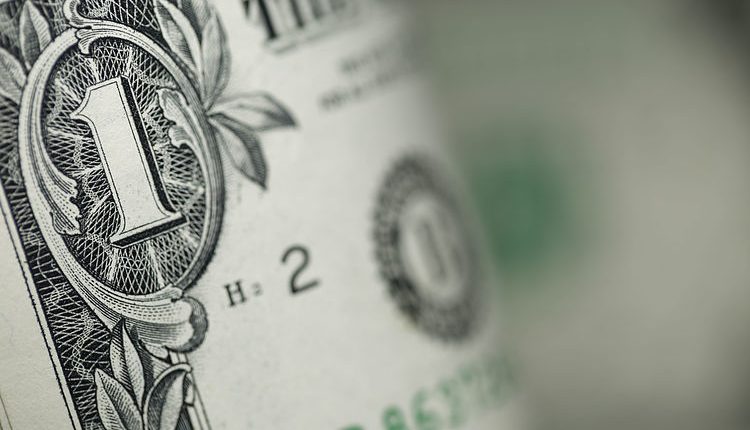- The Greenback recovers all losses from earlier this week.
- With only second-tier data at hand, a weekly positive close looks inevitable.
- The US Dollar Index looks back on track toward heading to 107.
The US Dollar (USD) is picking up where it left off on Thursday, showcasing its resilience after one component of the monthly headline inflation gauge ticked up against all odds. Inflation fears got reignited again, triggering a bond sell-off. US yields soared, fueling the Greenback rally against most major peers. Where the US Dollar Index is trading at the moment, it looks like this week’s weakness was just a small decoupling, and more US Dollar strength is to be factored in.
On the data front this Friday, there is not much that could turn this ship around. No Federal Reserve speakers are scheduled. With the Import/Export Price Index and the University of Michigan (ISM) Sentiment Index, no real market moving catalysts are present.
Daily digest: US Dollar jumps around
- At 12:30 GMT, the Import-Export Price Index for September will be released: Export Prices on a monthly basis are expected to head from 1.3% to 0.5%. The yearly component was at -5.5% and is expected to head to -4.0%. The Import Prices on a monthly basis are set to stay steady at 0.5%. The Yearly component is expected to head from -3% to -1.4%.
- At 14:00 GMT the University of Michigan (ISM) will release its Sentiment Index and Consumer inflation expectations. The Sentiment Index is expected to head from 68.1 to 67.4. The Inflation expectation is expected to remain steady near 2.8%.
- Equities are not dealing well with the current shift in sentiment and are sliding lower: The Hang Seng is the biggest loser, down over 2%. European equities are retreating as well, though less than 1%. US equity futures are flat and clueless concerning direction for now.
- The CME Group FedWatch Tool shows that markets are pricing in a 90.2% chance that the Federal Reserve will keep interest rates unchanged at its meeting in November.
- The benchmark 10-year US Treasury yield soared to 4.66%, even briefly testing 4.69%. The surprise uptick in headline inflation reshuffled the bond market into higher rates again.
US Dollar Index technical analysis: Weekly gains nearly locked in
The US Dollar is playing tricks on investors and traders. After the US Dollar Index (DXY) briefly snapped its weekly winning streak, it snapped as well a very important technical ascending trendline that was supporting price action since July. After the surprise uptick in headline monthly inflation, it looks like the yield story is back in play and the US Dollar Index is set to restart its winning streak after a small hiatus.
The DXY opened above 106 and should at least be able to make a new high for this week, above 106.60. On the topside, 107.19 is important to reach if the DXY can get a daily close above that level. If this is the case, 109.30 is the next level to watch.
On the downside, the recent resistance at 105.88 did not do a good job supporting any downturn. Instead, look for 105.12 to keep the DXY above 105.00. If that does not do the trick, 104.33 will be the best level to look for some resurgence in US Dollar strength with the 55-day Simple Moving Average (SMA) as a support level.
Fed FAQs
Monetary policy in the US is shaped by the Federal Reserve (Fed). The Fed has two mandates: to achieve price stability and foster full employment. Its primary tool to achieve these goals is by adjusting interest rates.
When prices are rising too quickly and inflation is above the Fed’s 2% target, it raises interest rates, increasing borrowing costs throughout the economy. This results in a stronger US Dollar (USD) as it makes the US a more attractive place for international investors to park their money.
When inflation falls below 2% or the Unemployment Rate is too high, the Fed may lower interest rates to encourage borrowing, which weighs on the Greenback.
The Federal Reserve (Fed) holds eight policy meetings a year, where the Federal Open Market Committee (FOMC) assesses economic conditions and makes monetary policy decisions.
The FOMC is attended by twelve Fed officials – the seven members of the Board of Governors, the president of the Federal Reserve Bank of New York, and four of the remaining eleven regional Reserve Bank presidents, who serve one-year terms on a rotating basis.
In extreme situations, the Federal Reserve may resort to a policy named Quantitative Easing (QE). QE is the process by which the Fed substantially increases the flow of credit in a stuck financial system.
It is a non-standard policy measure used during crises or when inflation is extremely low. It was the Fed’s weapon of choice during the Great Financial Crisis in 2008. It involves the Fed printing more Dollars and using them to buy high grade bonds from financial institutions. QE usually weakens the US Dollar.
Quantitative tightening (QT) is the reverse process of QE, whereby the Federal Reserve stops buying bonds from financial institutions and does not reinvest the principal from the bonds it holds maturing, to purchase new bonds. It is usually positive for the value of the US Dollar.
Read the full article here

